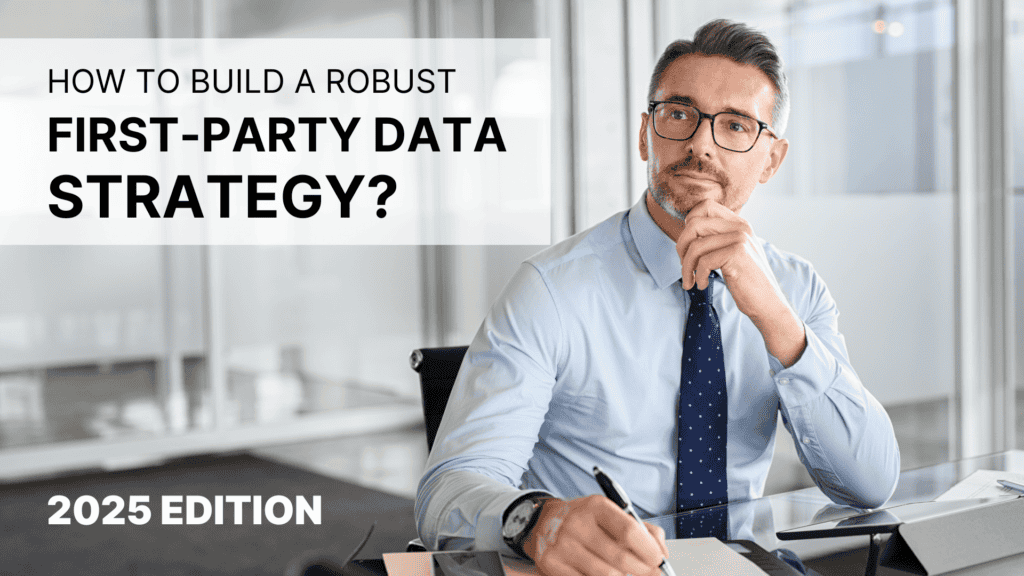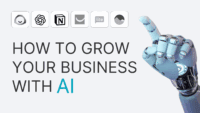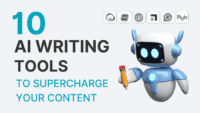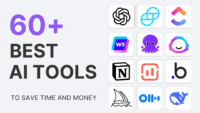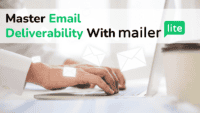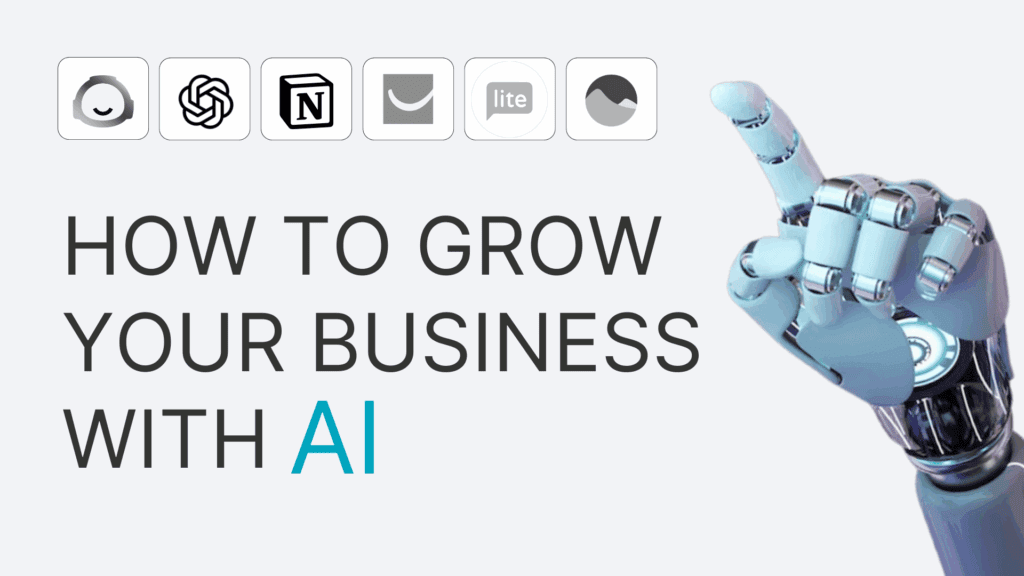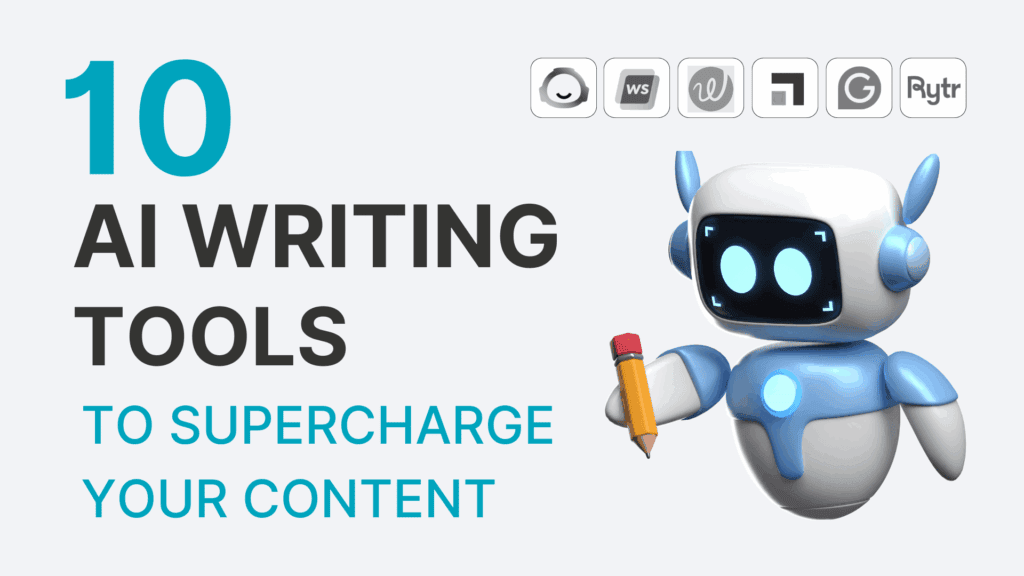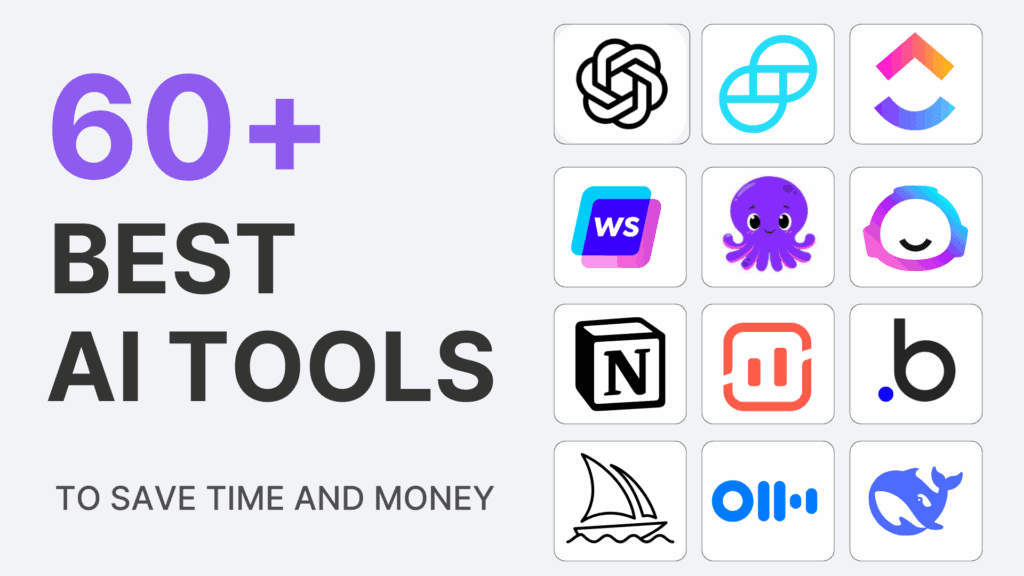Gone is the time when you build multi-channel marketing plans and rely on the power of third-party data to target and personalize your customer experience.
To scale engagement across all of your tools and all of your channels— accurately and with consent— you need to rethink the kind of data you’re using, how you’re collecting it, how it’s distributed, and how you keep it secured.
In this article, we will explore what is first-party data, and how to capture these data and tackle the loss of third-party cookies with a solid first-party data strategy for a better customer experience.
Let’s dive in!
Why is first-party data important?
With the deprecation of third-party cookies, shifting to first-party data strategies to safeguard your customers and your business has never been more important than now.
- 69% of U.S. online adults shop more with retailers that offer consistent customer service both online and offline.
- 52% of marketers are prioritizing the collection of more first-party data from digital experiences due to regulations.
- 25% of marketers and agencies are still using third-party cookies
- 52% of B2C customers stopped buying after a bad customer service experience.
- Marketers anticipate a $10 billion loss in revenue due to reduced personalization and audience targeting capabilities.
Sources Statista, Zendesk, Insider Intelligence
With web browser changes and limitations, more rigorous data privacy laws, and the need for more personalized experiences independent from third-party data tracking, first-party strategies appear as the right solutions to support your organizational goals and revenues while keeping your customers’ privacy.
First-party data fuels personalization beyond your ads and supports how you connect and (re)engage with your prospects and customers via emails, answer custom service questions, understand new paths to purchase when users land on your website, and stay relevant amidst heightened competition.
The biggest challenge for advertisers and businesses has been to prioritize how to collect and analyze first-party data to enable more effective marketing and customer service plans, tailor new product features, or address issues preventing them from scaling your business.
What is first-party data?
First-party data refers to information collected directly from individuals or customers by the organization or company itself. This data is obtained through interactions and engagements with customers on owned platforms or channels, such as websites, mobile apps, email communications, customer service interactions, and loyalty programs.
Key characteristics of first-party data include:
- Directly collect from customers
- Owned and controlled by the organization that collects it
- High-quality, accurate, and reliable
- Includes details information
- Consent-based data capture following Privacy and Compliance regulations
How to capture first-party data?
There are many examples of first-party data you can capture to personalize your customer experience;
- Website Analytics Data collected through tools like Google Analytics or Adobe Analytics, including website visits, page views, bounce rates, session durations, and conversion rates.
- Customer Registration Data is collected when customers create accounts or register on a website or mobile app, such as names, email addresses, demographics, and preferences.
- Purchase History such as details of past purchases made by customers, including products or services purchased, transaction amounts, purchase dates, and payment methods.
- Email Engagement Data related to email interactions, such as open rates, click-through rates, email preferences, and subscription status.
- Social Media Engagement Data which are Metrics from social media platforms, including likes, shares, comments, followers, and user-generated content.
- Customer Feedback and Surveys: collected through customer surveys, feedback forms, or post-purchase surveys, providing insights into customer satisfaction, preferences, and opinions.
- Customer Service Interactions which are data from customer service interactions, such as support tickets, chat transcripts, call logs, and customer feedback received through support channels.
- Mobile App Usage Data about how customers interact with a mobile app, including app installs, in-app actions, session durations, and app preferences.
- Event Registration Data is collected when customers register for events, webinars, or workshops, including event preferences, attendance history, and feedback.
- Customer relationship management (CRM) Data which includes contact information, communication history, purchase history, and customer preferences stored in a CRM system.
All these dataset can help you design your ideal customers, build richer personas, group and segment potential buyers, improve predictive analytics capabilities, and create hyper-personalized plans to engage with your audience while preserving their privacy.
What skillset and talents do you need to manage first-party data?
To manage, capture, analyze, and make informed decisions, you need talents and technologies to support you.
Ideal skills for individuals involved in these tasks include:
- Data analysis and interpretation
- Data management and governance
- Digital marketing expertise
- CRM expertise
- Technical proficiency
- Problem-solving and adaptability
- Project management skills
Job titles for individuals with the skillset required for capturing, managing, and marketing first-party data include:
- Data Analyst/Data Scientist – usually responsible for analyzing first-party data to derive actionable insights, develop predictive models, and inform data-driven decision-making processes.
- Data Engineer – designs, builds, and maintains data infrastructure and systems to capture, store, and process first-party data efficiently and securely.
- Digital Marketing Manager oversees digital marketing strategies and campaigns, leveraging first-party data to personalize content, target audiences, and optimize marketing performance across digital channels.
- CRM Manager manages customer relationship management (CRM) systems and initiatives, maintaining comprehensive customer profiles, and leveraging first-party data to drive personalized communication and engagement strategies.
- Data Privacy/Compliance Specialist ensures compliance with data privacy regulations and internal data governance policies, providing guidance on data collection, storage, usage, and protection practices related to first-party data.
- Marketing Analytics Manager leads marketing analytics initiatives, analyzing first-party data to measure marketing effectiveness, optimize campaigns, and identify opportunities for improving customer engagement and retention.
- Digital Analytics Specialist focuses on analyzing digital data from various sources, including first-party data, to track user behavior, measure website/app performance, and inform digital marketing strategies and user experience improvements.
- Data Strategy Manager/Director develops and executes data strategies that involve capturing, managing, and leveraging first-party data to drive business growth, improve customer experiences, and achieve marketing objectives.
- Customer Insights Manager gathers and analyzes customer insights derived from first-party data to understand customer behavior, preferences, and needs, informing product development, marketing strategies, and customer retention efforts.
- Marketing Technology (MarTech) Specialist manages marketing technology platforms and tools used for capturing, managing, and activating first-party data, ensuring seamless integration and optimization of data-driven marketing efforts.
Salary ranges for each role can vary significantly depending on factors such as location, industry, company size, years of experience, and specific skills. However, here are approximate average salary ranges for the roles mentioned:
| Role | Average Salary Range (per year) |
|---|---|
| Data Analyst/Data Scientist: | $60,000 – $120,000 |
| Data Engineer | $70,000 – $140,000 |
| Digital Marketing Manager | $65,000 – $130,000 |
| CRM Manager | $60,000 – $120,000 |
| Data Privacy/Compliance Specialist | $70,000 – $130,000 |
| Marketing Analytics Manager | $70,000 – $140,000 |
| Digital Analytics Specialist | $60,000 – $120,000 |
| Data Strategy Manager/Director | $90,000 – $180,000 |
| Customer Insights Manager | $70,000 – $140,000 |
| Marketing Technology (MarTech) Specialist | $65,000 – $130,000 |
Planning for the right resource and identifying the incremental cost to add talents to your team is key when planning for your first-party data strategy.
How to use first-party data (and build effective business and marketing plans)?
Now that you have the resources and talents in place to support, using first-party data in advertising and marketing plans will significantly enhance the targeting, personalization, and overall effectiveness of your campaigns. Here are concrete examples of how to leverage first-party data in advertising and marketing:
Segmentation and targeting
Use first-party data to segment your audience based on demographics, behaviors, interests, and purchase history. Target specific segments with personalized messaging and offers tailored to their preferences. For example, if you have data showing that a segment of your customers frequently purchases outdoor gear, target them with ads promoting your latest outdoor products.
Personalized content creation
Utilize first-party data to personalize content across various marketing channels. Tailor email campaigns, website content, and social media ads based on user preferences and past interactions.
For instance, if a customer has shown interest in a particular product category, recommend related products in your email newsletters or on your website.
Dynamic retargeting
Implement dynamic retargeting ads based on users’ past interactions with your website or mobile app. Show personalized ads featuring products or services they viewed but didn’t purchase.
For example, if a user added items to their shopping cart but abandoned the purchase, display retargeting ads reminding them of the items and offering a special discount to encourage conversion.
Lookalike audience targeting
Use first-party data to create lookalike or similar audience segments that share similar characteristics with your existing customers. You know what your high-value customers look like and how they act.
Turn into targeted campaigns to convert other like-individuals into high-value customers, displaying intent and affinity to become part of this segment.
Target these audiences with ads to expand your reach to new potential customers who are likely to be interested in your products or services.
Use your email list and segments of active purchasers and high LTV buyers to build a custom look-alike audience you can target on Social media while saving money by reducing unnecessary ad spend and bypassing third-party tracking.
Lifecycle marketing campaigns
Develop lifecycle marketing campaigns based on first-party data to engage customers at different stages of the customer journey. Send targeted messages or offers to customers based on their lifecycle stage, such as welcome emails for new subscribers, personalized recommendations for repeat customers, or re-engagement campaigns for inactive users.
Personalized Ad creative
Customize ad creative and messaging based on user’s preferences and past interactions. Incorporate dynamic content elements such as product recommendations, personalized messages, or user-specific data points to make ads more relevant and engaging. For example, create personalized ads showcasing products that align with users’ past purchases or browsing behavior.
Cross-sell and up-sell opportunities
Identify cross-sell and up-sell opportunities using first-party data insights. Target customers with complementary products or higher-tier offerings based on their past purchases or preferences. For instance, if a customer has purchased a camera, target them with ads for camera accessories or a premium camera model.
Frequency capping and ad sequencing
Optimize ad delivery frequency and sequencing based on users’ interactions and preferences. Use first-party data to set frequency caps to avoid overexposure and ensure a positive user experience. Additionally, sequence ads strategically to guide users through the conversion funnel, showing them relevant messages at different touchpoints.
How to build your first-party data strategy?
Building a first-party data strategy involves several key steps to effectively collect, manage, and utilize data directly from your customers or users. Here’s a recap on how to build a first-party data strategy:
- Audit your existing data sources
- Define your goals, objectives, and KPIs
- Identify the talents and resources to put in place
- Identify customer data sources to collect
- Implement a CDP solution to collect and manage your first-party data
- Enable cross-channel integration
- Build an omnichannel personalization and targeting plan
- Implement tactics and channel priorities
- Measure, optimize, iterate
Best CDP solutions to leverage first-party data?
The key to building a successful first-party data strategy is to have the right technology to support it; your tech solutions should connect all data types, support compliance based on customer consent and preferences, and adapt to your existing technology stack.
Finally, your first-party data technology should deliver real-time data and ensure standardization capabilities of all the information flowing into it.
For CPGs and Consumer brand businesses, great examples of industries already ahead of the first-party data game are financial institutions and healthcare, developing customer-centric policies, solutions, and experiences, navigating customer data and privacy and regulations data.
If you are serious about investing in first-party data strategies, you will need a robust Customer Data Platform (CDP) to manage it all. CDPs usually offer machine learning and personalization engine capabilities, marketing automation, and cross-channel execution features. Here is a short list of robust CDPs that can support your first-party data strategies:
- Bloomreach offers limitless personalization for limitless shopping experiences through their customer data engine and across email, SMS, mobile ads, and retargeting.
- Tealium is one of the most trusted CDPs to unify all your data into one place to deliver real-time personalized experiences.
- Segment brings together clean, consented customer data in real-time customizing your customer data pipeline, getting a complete view of your customers, and offering AI-powered journeys to design cross-channel engagement.
- Klaviyo has reimagined its product offering to fit businesses of all sizes, improving data accuracy and consistency, and providing personalization tools across your tech stack to create powerful web and mobile experiences.
- SAP supports enterprise-wide customer data management that helps you elevate customer engagement to increase conversion and strengthen retention.
- Emarsys empowers marketers to build, launch, and scale personalized cross-channel campaigns that drive business outcomes.
Wrapping Up
First-Party Data is the “life of the party” coming into a post-third-party cookie era.
It is extremely valuable for organizations as it provides insights into customer behavior, preferences, and needs, enabling them to personalize marketing efforts, improve customer experiences, and make data-driven business decisions.
Capturing first-party data involves collecting information directly from your customers or users through various touchpoints. Here are several methods for capturing first-party data.
First-party data provides key information about your customers, gathered through your owned platforms such as website analytics, social media, email engagement, feedback and surveys, and data you collect in your CRM.
It requires having the right financial resources, talents, and technologies in place to capture, manage, analyze, and build personalized and effective marketing and customer service plans.
When you pair the right technology with the right people and strategy, you can guarantee scalable customer acquisition, have an enhanced understanding and accurate single view of your customer, improve time to insight, and be independent of third-party solutions.
Don’t know where to start? Contact our team to help you take the next steps in building successful first-party data strategies.
Success Starts with The Good Strategy!


